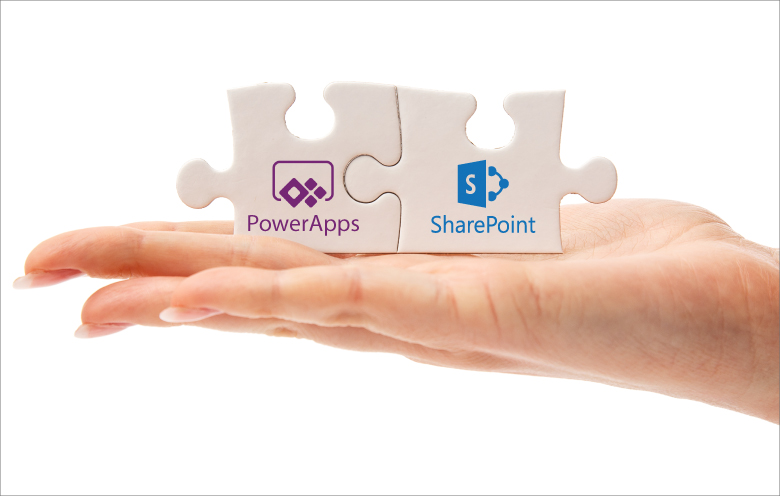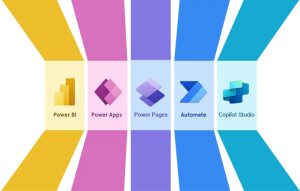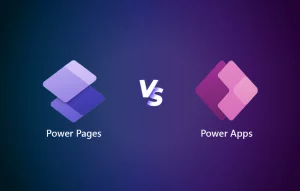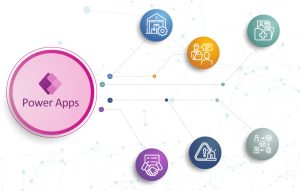Every organization’s constant focus is on improving internal collaboration and maintaining business continuity seamlessly irrespective of any circumstance. And this is why many organizations are choosing to integrate Power Apps with SharePoint to build low-code responsive applications with rich content and provide a personalized experience to employees, vendors, and clients. Besides, Power Apps integration with SharePoint also helps to create state-of-the-art mobile and web applications for better internal communication and enhanced employee productivity.
Now let’s dig deeper to know how the combination of Microsoft Power Apps and SharePoint can help companies to deliver a great user experience and quick access to information.
Introduction to Power Apps
We all are aware of the fact that Microsoft launched Power Apps in the year 2015 and it is now available for Office 365 (now Microsoft 365) users. Also, the tool is now totally incorporated with SharePoint (SP). Power Apps is a cloud-based software with a collection of apps, connectors, services and data platform that offers a rapid application development environment to create custom apps for your business needs.
It is a tool for Microsoft 365 users to create custom business apps with a drag-and-drop user interface to develop apps without coding knowledge. Such applications enable them to connect the data and work flawlessly across the web and mobile without having to spend on complex software development.
So, you can create applications and integrate with the common data sources like SharePoint, Salesforce, SQL database, Dynamics 365, Excel spreadsheet and others, thereby enhancing employee collaboration. Moreover, apps created using Power Apps are responsive in design and can run smoothly on any web browser or on mobile devices (phone or tablet).
How Power Apps is related to SharePoint
As mentioned above, Power Apps is a part of the Microsoft 365 suite, but independent of SharePoint. Power Apps is designed to work with a wide variety of database sources; it can easily be connected to any SharePoint list, library, or One Drive, enabling you to extract or store information without any databases and SQL knowledge. Moreover, it is completely integrated into the SharePoint web and mobile experience, which is itself connected to the data stored in SharePoint lists.
Some notable benefits of integrating Power Apps with SharePoint
Organizations are in search of business platforms, services, tools and applications irrespective of their sizes, which allow them to gain more with less effort as well as investment. The Power Apps integration services can address your business demands by enabling you to perform various functions within the SharePoint environment. Make the most of the Power Apps Platform and build an experience by integrating SharePoint along with a provision to include attachments, images, and managed meta-data with SharePoint Online.
Let’s have a look at some of the integration benefits:
- The advanced SharePoint libraries provide a huge source of data for Power Apps, helping you to make data-driven decisions from the business applications which are customized on these platforms.
- You can have access to Power Apps from your SharePoint mobile application which assists you in staying updated about any business information even while you are on the go.
- Moreover, you can automate your mundane business tasks as Power BI can also be integrated with SharePoint Online as well as Power Apps. With Power BI, you can visualize analytics when integrated with SharePoint and it will help you to embed analytics and charts onto your dashboard. With a single-view dashboard having charts and analytics, you can make informed decisions rapidly.
Steps to create Power Apps from SharePoint Online list
Follow the instructions mentioned below to integrate Power Apps with SharePoint, so that you can develop custom apps seamlessly:
1. From the SharePoint list, select “Create” the Power Apps option. Once you select it, the web designer window will open in your browser.
2. You will know exactly from which SharePoint list you want to create the Power App, so it will automatically create the basic version of the app.
3. In case, if you want to make any changes in the developed application, then make use of the web designer and introduce features which meet your particular requirements.
4. Then you can share the applications with your internal teams who are present on the SharePoint lists.
5. You can access the app on Windows, Android, iOS and web browsers as well.
The final say
Last, but not the least, by integrating Power Apps with SharePoint, your application is infused with cutting-edge SP features such as artificial intelligence-powered content, intelligent intranet and search management among others. The combined potential of both optimizes process efficiency, enhances internal collaboration, empowers targeted decision-making and more. If you want more information about how Power Apps integration with SharePoint can be lucrative for your business, talk to our Power Apps developers now.









